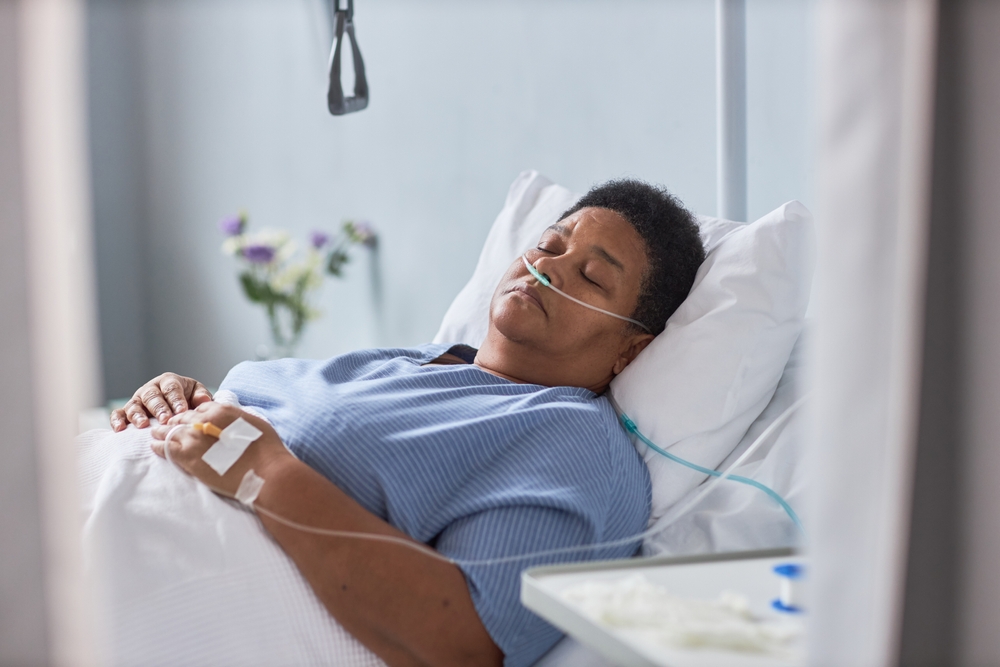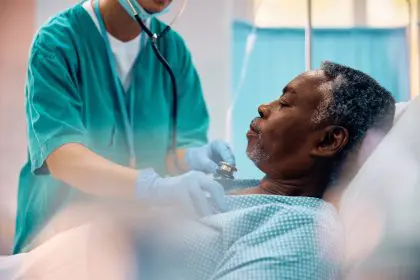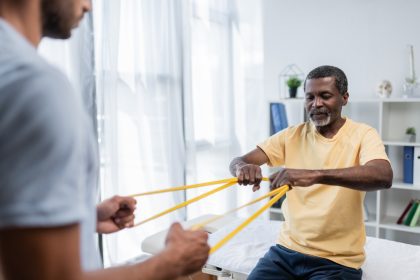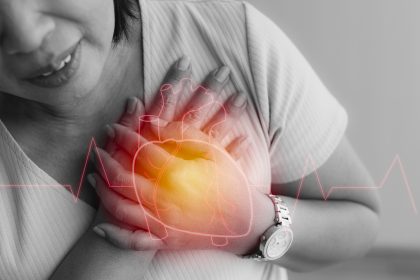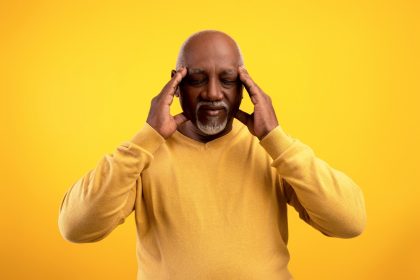The difference between life and death, between full recovery and permanent disability, often comes down to a matter of minutes when someone experiences a stroke. This medical emergency creates a race against time that most people don’t fully understand until they or a loved one faces this terrifying situation.
Each passing moment during a stroke represents thousands of brain cells dying, creating irreversible damage that can affect speech, movement, memory, and countless other functions that make us who we are. The urgency surrounding stroke treatment isn’t just medical protocol—it’s the difference between maintaining independence and requiring lifelong care.
Understanding why time becomes so critical during a stroke emergency can help save lives and preserve brain function for millions of people who will face this medical crisis. The knowledge of what happens inside the brain during those crucial first hours can transform how families respond to stroke symptoms and dramatically improve outcomes.
Brain cells begin dying within minutes
When a stroke occurs, the brain’s intricate network of blood vessels either becomes blocked or ruptures, cutting off the vital oxygen and nutrients that brain cells need to survive. Unlike other parts of the body that can tolerate reduced blood flow for extended periods, brain tissue begins dying almost immediately when deprived of oxygen.
The most devastating aspect of this process is its rapid progression. Brain cells start dying within just two to three minutes of being deprived of oxygen, and this cellular death continues relentlessly until blood flow is restored. Each minute that passes during a stroke results in the loss of approximately 1.9 million brain cells, a staggering number that helps explain why immediate medical intervention is so crucial.
The brain’s inability to regenerate these lost cells makes stroke damage particularly devastating. Unlike skin cells that regrow after injury or broken bones that heal over time, dead brain cells cannot be replaced. This permanent loss means that every minute of delay in treatment represents brain function that may never return.
The cellular death process doesn’t stop immediately even after blood flow is restored. The brain tissue surrounding the main area of damage, known as the penumbra, remains at risk for hours after the initial stroke. However, this vulnerable tissue can often be saved with prompt treatment, making early intervention even more critical.
The golden window of treatment opportunity
Medical professionals recognize a critical time window during which stroke treatments are most effective, often referred to as the therapeutic window. For the most common type of stroke, caused by blood clots blocking brain arteries, this window extends approximately four and a half hours from symptom onset, though newer treatments may extend this timeframe in certain circumstances.
Within this golden window, clot-dissolving medications can be administered to restore blood flow to affected brain areas. These treatments work by breaking down the blood clot that’s blocking the artery, allowing oxygen-rich blood to reach starving brain tissue before permanent damage occurs.
The effectiveness of these treatments decreases dramatically as time passes. Patients who receive treatment within the first hour of symptom onset, sometimes called the “golden hour,” have the best chance of complete recovery with minimal lasting effects. As each hour passes, the likelihood of significant improvement diminishes substantially.
For certain types of strokes, mechanical procedures to remove blood clots may be effective for up to 24 hours after symptom onset, but these interventions require specialized equipment and expertise available only at comprehensive stroke centers. Even with these extended treatment options, earlier intervention consistently produces better outcomes.
Different stroke types require different urgent responses
Strokes fall into two main categories, each requiring different but equally time-sensitive treatment approaches. Ischemic strokes, which account for about 85% of all strokes, occur when blood clots block arteries supplying the brain. These strokes respond well to clot-dissolving medications and mechanical clot removal procedures when administered quickly.
Hemorrhagic strokes result from ruptured blood vessels in the brain, causing bleeding that damages surrounding tissue through pressure and toxic blood components. While these strokes don’t benefit from clot-dissolving medications, they still require immediate medical intervention to control bleeding and reduce pressure on the brain.
The challenge in emergency situations is that determining stroke type requires specialized brain imaging that’s only available in hospital settings. This diagnostic necessity makes immediate transportation to appropriate medical facilities crucial, regardless of suspected stroke type. Delaying hospital arrival to “wait and see” if symptoms improve can prove catastrophic for either stroke type.
Emergency medical teams can begin initial assessment and treatment during transport, making professional emergency response more valuable than attempting to drive stroke victims to hospitals independently. These teams can also communicate with hospital stroke teams, enabling immediate treatment preparation that saves precious minutes upon arrival.
Brain damage spreads beyond the initial injury site
The destruction caused by stroke extends far beyond the immediate area where blood flow is blocked or bleeding occurs. The brain operates as an interconnected network, with different regions depending on each other for optimal function. When one area is damaged, connected regions may also suffer reduced function even if they receive adequate blood flow.
This spreading damage, known as secondary injury, can continue for hours or even days after the initial stroke. Inflammation, swelling, and toxic chemical releases from dying brain cells can damage previously healthy tissue surrounding the stroke site. Early treatment can minimize these secondary effects and preserve more brain function.
The brain’s communication pathways, like highways connecting different cities, can be disrupted even when the damage occurs in seemingly small areas. A stroke affecting a critical junction point can impact functions controlled by distant brain regions, making the location of stroke damage as important as its size in determining overall impact.
Understanding this spreading damage pattern helps explain why patients may experience improvement days or weeks after their stroke as brain swelling reduces and alternative pathways develop. However, the extent of this recovery depends heavily on how much tissue was saved through prompt initial treatment.
Emergency recognition saves precious minutes
Recognizing stroke symptoms quickly can mean the difference between minor impairment and devastating disability. The most common stroke symptoms include sudden weakness or numbness on one side of the body, sudden confusion or difficulty speaking, sudden vision problems, sudden severe headache, and sudden difficulty walking or maintaining balance.
The key word in all these symptoms is “sudden.” Stroke symptoms typically appear abruptly rather than gradually developing over hours or days. This sudden onset distinguishes stroke from many other medical conditions and should prompt immediate emergency medical care rather than waiting to see if symptoms improve.
Many people hesitate to call emergency services because they’re unsure whether their symptoms constitute a true emergency. This hesitation proves costly when dealing with stroke, where every minute of delay increases the extent of permanent brain damage. Medical professionals emphasize that it’s better to be cautious and seek immediate care for suspected stroke symptoms than to wait and risk permanent disability.
Family members and bystanders play crucial roles in stroke recognition and response. Often, stroke victims themselves may not recognize their symptoms due to the brain changes caused by the stroke. Having others who can identify stroke symptoms and take immediate action becomes vital for ensuring prompt treatment.
Hospital systems mobilize for time-critical care
Modern hospitals have developed sophisticated systems to minimize treatment delays for stroke patients. Stroke teams can be assembled within minutes of patient arrival, with specialists immediately available to evaluate patients and begin treatment. These rapid response systems recognize that every minute of delay translates to more extensive brain damage.
Advanced imaging technology allows medical teams to quickly determine stroke type and identify the precise location of blood vessel blockages or bleeding. This rapid diagnosis enables targeted treatment decisions that can restore blood flow to affected brain areas with minimal delay.
Treatment protocols have been streamlined to eliminate unnecessary delays while maintaining safety standards. Pre-hospital communication between emergency medical teams and hospitals allows stroke teams to prepare for patient arrival, with treatment potentially beginning within minutes of hospital arrival rather than hours.
The coordination between different hospital departments—emergency medicine, neurology, radiology, and laboratory services—has been optimized to function as a seamless team focused on minimizing door-to-treatment times. This systematic approach recognizes that organizational efficiency directly impacts patient outcomes in time-critical stroke care.
Recovery potential depends on treatment timing
The relationship between treatment timing and recovery outcomes is profound and well-documented. Patients who receive treatment within the first hour of symptom onset often experience complete or near-complete recovery, resuming their normal activities with minimal lasting effects from their stroke.
As treatment delays increase, the likelihood of returning to pre-stroke function decreases substantially. Patients treated within three hours may experience significant improvement but often retain some lasting effects. Those who receive treatment after the optimal window may survive but frequently require extensive rehabilitation and long-term care support.
The impact of treatment timing extends beyond immediate survival to affect quality of life for years after the stroke. Early treatment preserves brain tissue responsible for speech, movement, thinking, and personality—functions that define individual identity and independence. Delayed treatment may save life but at the cost of these essential capabilities.
Even partial recovery achieved through prompt treatment can mean the difference between living independently and requiring nursing home care. The preservation of even small amounts of additional brain tissue through early intervention can have profound implications for long-term function and quality of life.
Prevention awareness complements emergency response
While emergency response remains crucial for stroke treatment, understanding stroke risk factors and prevention strategies provides the best long-term protection. High blood pressure, diabetes, high cholesterol, smoking, and irregular heart rhythms significantly increase stroke risk and can often be managed through lifestyle changes and medical treatment.
Regular medical check-ups allow for early identification and management of stroke risk factors before they lead to actual strokes. This preventive approach reduces the likelihood of facing the time-critical emergency situation altogether, providing better outcomes than even the most prompt emergency treatment.
Lifestyle modifications including regular exercise, healthy diet, smoking cessation, and moderate alcohol consumption can dramatically reduce stroke risk for most people. These changes become increasingly important as individuals age and accumulate additional risk factors over time.
Understanding family history and genetic predisposition to stroke helps individuals make informed decisions about prevention strategies and medical monitoring. While genetic factors cannot be changed, their influence can often be minimized through proactive medical care and lifestyle choices.
Technology advances improve time-sensitive care
Modern technology continues to expand treatment options and extend effective treatment windows for stroke patients. Advanced imaging techniques can identify brain tissue that remains viable hours after symptom onset, potentially extending treatment opportunities for selected patients.
Mobile stroke units, essentially hospitals on wheels equipped with advanced imaging and treatment capabilities, bring time-critical care directly to patients. These specialized vehicles can begin definitive treatment at the scene rather than waiting for hospital arrival, potentially saving crucial minutes in the treatment timeline.
Telemedicine technology allows stroke specialists to evaluate patients remotely, bringing expertise to hospitals that may not have on-site stroke specialists. This technology ensures that more patients receive appropriate treatment within critical time windows, regardless of their geographic location.
Artificial intelligence systems are being developed to accelerate stroke diagnosis and treatment decisions, potentially reducing the time from symptom onset to treatment initiation. These technological advances promise to further improve outcomes for stroke patients by optimizing every aspect of time-critical care.
The fundamental truth about stroke treatment remains unchanged despite these technological advances: time equals brain tissue, and brain tissue equals function. Understanding this critical relationship empowers individuals and families to respond appropriately when faced with stroke symptoms, potentially preventing devastating disability through prompt action. Every person should know stroke symptoms and understand that immediate emergency medical care represents the best chance for preserving brain function and maintaining quality of life after stroke.

